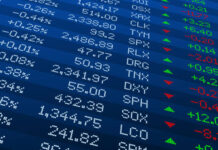Markets
Yesterday’s most striking market move happened in the gas market. Europe’s main reference, the Dutch TTF future, dropped more than 14% to the lowest level since September 2021 (55.45 €/MWh). Well-filled storage sites and the up until now very mild winter explain the consistent downtrend over the past months. Breaking through key support at 61.50 put an accelerator on the move yesterday. Other markets, including equities (ended flattish) and core/German bonds (moves between -2.7 bps at the front and +1.3 bps at the long end) showed little signs of life in absence of economic data and guidance from the US. EUR/USD at first sought to extend recent gains but in the end closed, you guessed it, almost unchanged in the low 1.08(2) area. Sterling held stable as well around the EUR/GBP 0.8867 resistance level (Oct. 2022 high).
The Asian session this morning revolves around the Chinese Q4 GDP release. Numbers crushed consensus with the economy flatlining Q/Q, defying expectations for a 1.1% contraction. Y/Y and YtD, China’s economy is now about 3% larger. The accompanying monthly data series gives a flavour of where the upbeat surprise came from. Industrial production rose 1.3% YtD while retail sales were less worse than feared (-0.2% YtD vs -0.8% expected) despite the country’s messy exit from zero-Covid. Property investment contracted 10% YtD, highlighting the ongoing malaise in the sector. The Chinese stock indices and the yuan don’t profit though, on the contrary. USD/CNY extends a rebound after hitting support at 6.69 (61.8% retracement on the 2022 rally) on Monday to 6.768 today as the PBOC injected short-term cash by the most in four years. In an interview with the FT published this morning, ECB’s Lane said risks of raising the policy rate further are not yet two-sided, meaning that the cost of doing too little still outweighs that of doing too much. According to the chief economist, rates currently are in “ballpark” of neutral. The euro trades stoic around yesterday’s closing levels. The dollar doesn’t pick sides either. US Treasuries open lower after the long weekend with yields advancing 1.3-5.3 bps.
Today’s economic calendar already used up a lot of its ammo with the Chinese GDP release. Remaining data contains a solid UK labour market report. Employment rose by 27k in the three months through November vs a stagnation expected. Earnings also surpassed consensus estimates, coming in at 6.4%. A first glimpse for December employment was slightly less than forecasted (28k vs 60k). EUR/GBP quickly erased a small uptick shortly after the release to trade at 0.887 currently. For the dollar, we’re on the lookout whether last week’s tentative bottoming out signals continue. EUR/USD’s upside is capped around 1.0942 with first downside protection kicking in at 1.073. The same applies for core bond yields. The US 10y yield hit important support last week at 3.42%. The technical picture for the German 10y yield is a bit more neutral.
News Headlines
Euronext yesterday announced that the European expansion of Euronext Clearing to Euronext derivatives markets is planned for Q3 2024. It will be the final step in a process which started in the April 2021 purchase of Borsa Italiana which included the CC&G clearing house in Milan. That way, Euronext no longer had to completely rely on third-party providers such as LCH (subsidiary of London Stock Exchange). Euronext will pay a €36mn termination fee with LSE and is willing to sell its 11.1% stake in LCH France back to its British majority owner. Euronext will by the end of 2024 be able to manage the entire trading value chain of its markets: directly operating clearing activities for cash, listed derivatives and commodities markets, providing one single platform for clients to access information on collateral, risk and clearing, implementing a new Value-at-Risk methodology and other smaller efficiency gains.
Australian Westpac Consumer confidence rose from 80.3 to 84.3 in January, which is the biggest increase since April 2021. The main driver for the improvement was interest rates. Consumers have been responding to rate hikes from the RBA every month since May last year, but in January there was no meeting and thus no increase, offering some temporary relief to borrowers. Overall, sentiment remains in deeply pessimistic territory, but there signs that consumers can see some light at the end of the tunnel. Confidence among mortgage holders rose and there was an improvement in the outlook for the labour market. House prices are still expected to rise over the next 12 months, which is something to keep an eye on. AUD/USD holds around 0.6950.













